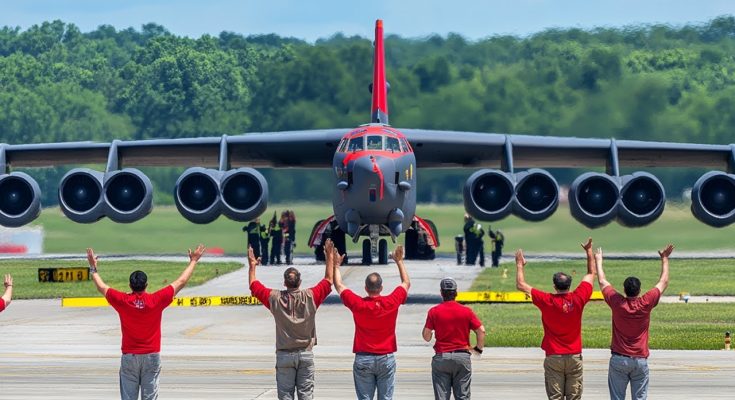Finally! The U.S. is Testing Brand-New B-52s to Fly for a Full Century!
The B-52 Stratofortress is already one of the most legendary bombers in aviation history, and now, the U.S. Air Force is ensuring that this iconic aircraft remains battle-ready for a full century. Originally introduced in 1955, the B-52 is undergoing a massive upgrade program that will allow it to remain in service until at least 2055, making it one of the longest-serving military aircraft of all time.
With new engines, upgraded avionics, and advanced weapon systems, the modernized B-52—now designated as the B-52J or B-52H re-engined—will be more efficient, lethal, and adaptable than ever before. But what exactly is changing, and why is the Air Force betting on a bomber designed during the Cold War to stay relevant in the 21st century?
Why the U.S. Air Force is Keeping the B-52 for 100 Years
🔹 Unmatched Range & Payload: The B-52 can fly more than 8,800 miles (14,080 km) without refueling and carry 70,000 pounds (32,000 kg) of weapons, making it one of the most capable bombers in the world.
🔹 Cost-Effective Longevity: Compared to developing an entirely new strategic bomber, upgrading the B-52 is far more affordable, keeping the aircraft relevant at a fraction of the cost.
🔹 Nuclear & Conventional Versatility: The B-52 remains a key part of the U.S. nuclear triad, capable of carrying nuclear and conventional weapons, including hypersonic missiles in the near future.
With tensions rising globally and new threats emerging, the U.S. Air Force sees the B-52 as a vital tool in maintaining global deterrence and power projection.
Major Upgrades in the B-52J Program
To ensure the B-52 can fly for another 30+ years, it is undergoing a series of upgrades, including:
✅ Brand-New Engines – Rolls-Royce F130:
- Replacing the old Pratt & Whitney TF33 engines (in use since the 1960s).
- 30% more fuel-efficient, reducing costs and increasing range.
- Lower maintenance needs, allowing the Air Force to operate the bomber more reliably.
✅ Advanced Radar & Avionics:
- New AESA radar (similar to modern fighters like the F-35).
- Upgraded cockpit displays and communications systems for improved situational awareness.
✅ Hypersonic & Smart Weapons Compatibility:
- Integration of AGM-183 ARRW (Air-Launched Rapid Response Weapon), a hypersonic missile capable of striking targets at Mach 5+ speeds.
- Ability to carry new stand-off precision weapons and next-generation cruise missiles.
✅ Electronic Warfare Enhancements:
- Modernized self-defense and jamming systems to counter advanced enemy air defenses.
How the B-52 Compares to the B-2 & B-21 Raiders
While the B-2 Spirit and the upcoming B-21 Raider are advanced stealth bombers, the B-52 remains a critical asset because:
🔥 Lower operational costs than stealth bombers.
🔥 Ability to launch long-range missiles from safe distances, reducing the need for stealth.
🔥 Massive payload capacity, allowing it to overwhelm enemy defenses with sheer firepower.
Final Thoughts: The B-52’s Legendary Future
Few aircraft in history have had the endurance, adaptability, and sheer effectiveness of the B-52. With new engines, weapons, and sensors, this bomber will continue to dominate the skies well into the 2050s.
The B-52 Stratofortress is not just surviving—it’s thriving. And as the U.S. Air Force integrates hypersonic and next-gen nuclear capabilities, the B-52 will remain a fearsome symbol of American airpower for a full century!



